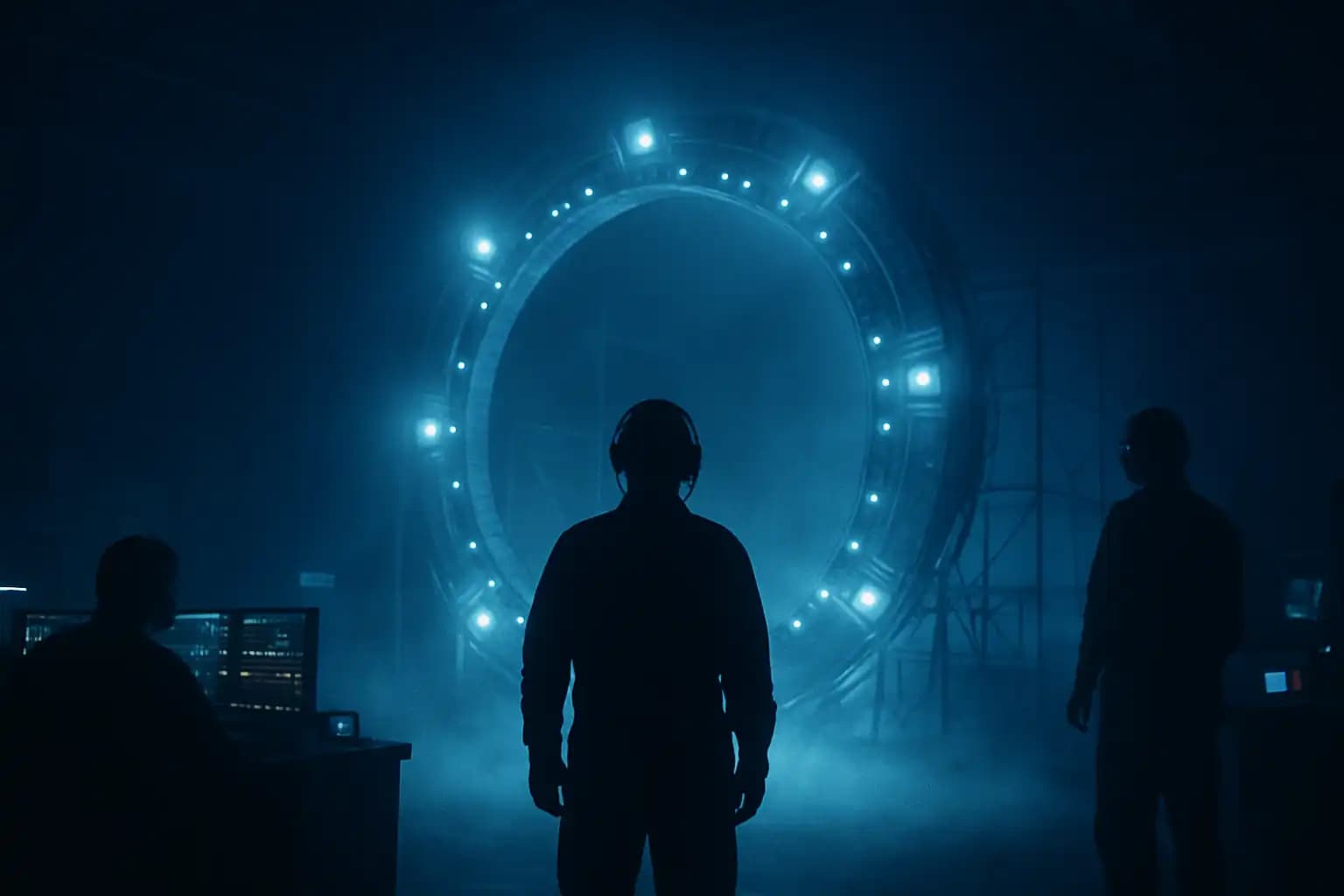“Last Black Friday ever” is a headline designed to attract clicks through scarcity and the fear of missing out, playing into the long-standing consumer habit of ritual shopping. However, as 2025 approaches, writers have legitimate reasons to heighten the drama—Adobe Analytics and the National Retail Federation unveiled projections in October and November that indicate record spending and a transformation in how those dollars are spent.
These projections also reveal a significant shift: Black Friday has evolved from in-store drama to an algorithm-driven, mobile-first, and varied payments spectacle. The numbers carry weight, and so does the framework supporting them: retailers’ supply chains, BNPL flows, and AI-driven personalization dictate which products sell out, determining if “last chance” is a genuine alert or a manufactured urgency.
Adobe’s 2025 holiday forecast and the data behind Black Friday online projections
Adobe Analytics’ October 6, 2025 forecast is the most comprehensive measurement of online holiday behavior. Adobe expects $253.4 billion in U.S. online sales from Nov. 1 to Dec. 31, 2025—a 5.3% increase from the previous year. It projects Black Friday online sales to reach about $11.7 billion, while Cyber Monday is anticipated to peak at around $14.2 billion. These predictions are based on real-time transaction data from many of the top 100 online retailers, alongside analyses of traffic sources, device usage, and payment method trends. Adobe acknowledged the rising influence of generative AI in shopping discovery and estimated BNPL volumes in the holiday window to be around $20 billion—data points that directly alter how retailers structure offers and target customers (Adobe holiday shopping report, Oct. 6, 2025).
NRF’s $1 trillion forecast for November–December 2025 and what total retail means
Two weeks following Adobe’s release, the National Retail Federation published its November 6, 2025 forecast forecasting retail sales in November and December to reach between $1.01 trillion and $1.02 trillion, reflecting a 3.7% to 4.2% increase over 2024. The NRF figure encompasses core retail categories (excluding autos, gas, and restaurants) and integrates macroeconomic indicators—such as wage growth, employment rates, and consumer sentiment—into econometric models. While Adobe focuses on online transaction data, the NRF captures total retail flows, emphasizing that in-person sales, catalog channels, and hybrid fulfillment still play crucial roles even as commerce becomes more digital (NRF press release, Nov. 6, 2025).
Why Black Friday numbers look bigger: mobile, AI discovery, and BNPL
Adobe’s October analysis explains the mechanics behind the impressive totals. Mobile devices now account for most online traffic and an increasing share of conversions; Adobe’s dashboard indicated that mobile represented about half of online spending in October 2025, with mobile checkout processes enhanced by one-click wallets and smart autofill features. Generative AI is transforming product discovery: retailers utilizing AI-driven recommendations experienced higher click-through and conversion rates in early October, and Adobe predicts a surge in AI traffic in the ten days leading up to Thanksgiving. At the payment level, BNPL continues to alter purchase timelines—Adobe anticipates BNPL to generate billions in holiday spending, expecting Cyber Monday BNPL volumes to exceed $1 billion, inflating online totals while shifting merchant risk differently over time (Digital Commerce 360 summary of Adobe projections, Oct. 8, 2025).
What the data misses: supply chains, localized shortages, and the psychology of “last” deals
Projections aggregate billions of transactions but cannot anticipate micro-supply disruptions at the SKU level. A shortage, shipping bottleneck, or targeted pricing error can create localized scarcity that social media converts into national panic. Retailers aim for margin optimization, meaning “limited quantities” often reflect inventory calculations rather than fundamental scarcity. Recognizing this distinction is crucial: aggregate demand and channel shifts illuminate trends, while supply chain audits and merchant inventories clarify whether an item is genuinely vanishing or simply understocked. For a deeper understanding of how narratives solidify into enduring myths, refer to investigative reporting that tracks rumor amplification during technological and cultural crises (this investigative summary on narrative amplification).
How retailers engineered the Black Friday moment: pricing algorithms, targeted drops, and livestream commerce
Retailers create urgency through automated pricing and selective inventory reveals. Algorithms test thousands of price variations in real time; merchants launch flash drops and limited-edition collaborations to foster scarcity, while livestream commerce and influencer partnerships convert excited viewers into immediate buyers. The overall effect renders the “last” Black Friday less of a singular event and more of a dual tactic—controlling supply while provoking demand. This strategy elucidates why specific categories—electronics, home improvement, and smart devices—show significant growth in Adobe’s projections and why certain product models quickly vanish from “Add to Cart” widgets.
Consumer harm and policy questions: BNPL regulation, return abuse, and labor stress
There are important tradeoffs to consider. BNPL enhances purchasing power but reallocates default risk to consumers who may overlook cumulative repayments. The NRF forecast suggests strong holiday hiring will occur, yet seasonal labor pressures and compressed delivery schedules heighten stress and error rates within fulfillment centers. Policymakers face tangible decisions: they must require clearer BNPL disclosures, urge platforms to standardize return and warranty processes, and enforce working-time protections during peak fulfillment periods. These choices are not theoretical; they are operational levers that determine whether growth is sustainable or merely extractive.
Why it matters: the cultural and economic consequences of a hyper-optimized Black Friday
The shift from in-store traditions to algorithmic sales has profound social implications. Black Friday once organized physical crowds and local commerce; now it consolidates bargaining power within a few platforms controlling discovery, payments, and last-mile logistics. This concentration impacts small merchants’ profit margins, consumer choice, and labor conditions. The metrics—Adobe’s $253.4 billion online forecast and NRF’s $1.01 trillion to $1.02 trillion overall forecast—are significant because they influence policy discussions regarding platform power, consumer protections, and the future of seasonal retail employment.
How to shop smarter this Black Friday: verification, timing, and consumer controls
Practical steps can minimize buyer’s remorse. Verify historical prices with price-tracking extensions to assess whether a “deal” is legitimate. Choose retailers with clear return policies and reliable fulfillment service level agreements (SLAs). Utilize payment methods with dispute resolution features if you are concerned that BNPL may obscure the total cost. Additionally, consider timing: early October deals suggest some merchants are altering promotional spending away from the traditional Thanksgiving window, indicating that the “last” day is no longer the only chance to save—assuming scarcity is genuine at the SKU level.
How journalists should cover Black Friday: data, context, and avoiding spectacle
Reporters should emphasize primary data—such as Adobe’s transaction analyses and the NRF’s econometric forecasts—rather than succumbing to the urge to amplify clickbait. Monitor device share, BNPL volumes, and supply chain signals; acquire retailer inventory statements; and challenge scarcity claims with fulfillment data. For parallels between how technological events evolve into mythological narratives and the necessity for evidence-based reporting, refer to archival cases documenting rumor cycles and narrative entrenchment in technological areas (an archival breakdown and an investigative case study).
Final read: what Black Friday 2025 actually tells us about commerce and culture
Black Friday 2025 will show robust scores—Adobe’s October report and NRF’s November forecast roundly predict record aggregate spending—but it also illustrates structural transformations: increased mobile checkouts, AI-first discovery, and heightened BNPL use. These dynamics give rise to impressive headline figures and fresh frictions. If you prioritize equitable markets, worker conditions, and consumer protections, these data points are essential for policymakers and journalists to monitor, rather than the sensational cries proclaiming an imminent retail apocalypse.
For a succinct overview of Black Friday’s history and the shopping calendar that spawned Cyber Monday and the Cyber 5, explore the historical entry on the shopping phenomenon in an authoritative encyclopedia resource (the history of Black Friday shopping).
For continuous coverage linking retail trends to broader cultural and technological narratives—spanning from streaming franchise cycles to solar-comet events—check curated analyses and timelines at Unexplained.co. For quick insights on related stories that examine how narratives and data intersect, our reporting on a revived Stargate franchise, interstellar comet coverage, and site-specific myths provides valuable parallels (franchise rollout analysis, space event field report, site myth archival breakdown, a health controversy analysis, and an ethics dossier).




